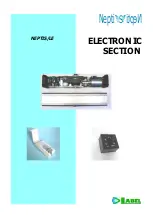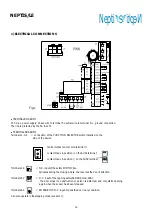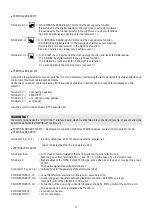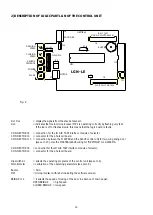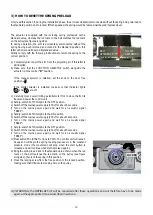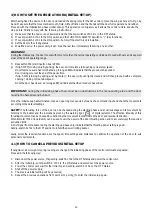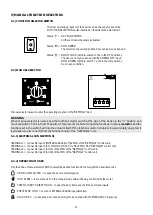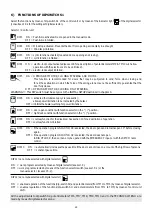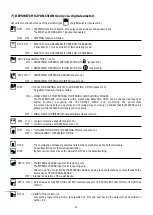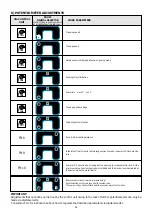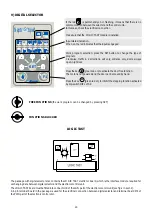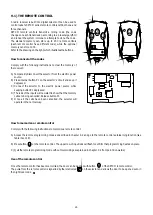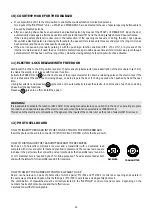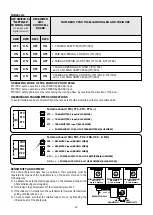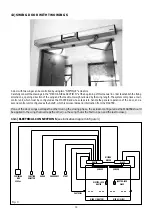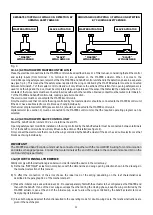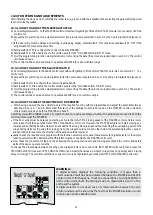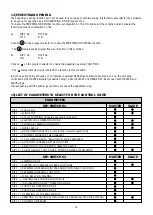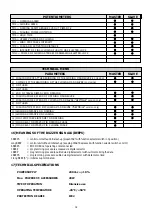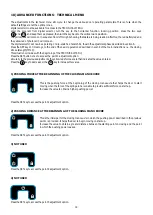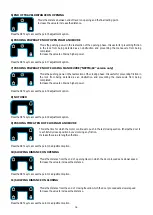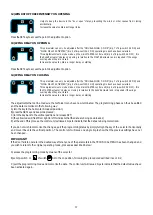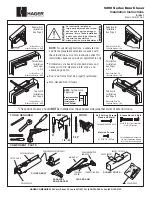
10) COURTESY MODE FOR THE DISABLED
!
Move dipswitch 8 of S1 to the ON position to enable the courtesy function for disabled persons.
Two inputs of the "NEPTIS/LE” unit, i.e. START and EMERGENCY, are dedicated to the use of special opening buttons able to
be used by disabled persons.
!
After an opening phase has been activated by a disabled person by means of the START or EMERGENCY input, the door
automatically closes again after the pause time set by potentiometer TM5 and the closing safety photocell input activates.
If the closing safety photocell is obscured in the last section of the opening manoeuvre or during the door open pause
time whilst a disabled person is crossing the threshold, the pause time is reduced to three seconds (even if a longer time has
been selected) and the door consequently closes again.
!
If the door is opened by manually pushing it with the push & go function enabled (DIP 1 of S1 ON), or by means of the
internal or external radar, if used, the door will immediately close again with a pause time at its minimum value (even though
potentiometer TM5 has been set for a longer time), while the closing safety photocell input will not be activated.
11) ELECTRO-LOCK RELEASE WITH FREE DOOR
Set dipswitch 2 of S2 to the ON position (see sect. 7) by means of digital selector (see a description of the procedure in sect. 9.2)
to enable the electro-lock release with free door function.
Activate the FREE DOOR function by means of the program selector to obtain a releasing pulse on the electro-lock if the
door is shut and at the end of each closing phase, so as to prepare the door for being opened when pushed by hand the next
time.
Use digital selector and press key (green led on) to automatically release the electro-lock at the end of each door-closing
phase in all the day functions.
Press key (green led off) to inhibit the option.
WARNING!
It is inadvisable to activate the function (DIP 2 S2/ON) by using manual selector, as a variation in the door’s operating program
can lead to an undesired release of the electro-lock even when the function selected is not FREE DOOR.
This is due to the electrical commutation of the signals on the inputs of the control unit as the knob of selector SMN is moved.
12) PHOTOCELL BOARD
HOW TO INSERT THE BOARD INTO THE CONNECTOR ON THE MOTHERBOARD
Insert the photocell board into connector J9 (PHOTOCELL CONTROL) of motherboard LGN.
HOW TO SELECT THE NUMBER OF PHOTOCELL PAIRS TO USE
Board can handle up to 3 pairs of photocells, of which 2 pairs ( FT1/FR1 and FT2/FR2 ) control door opening and operate in
the same way as the radar inputs, while the third pair ( FT3/FR3 ) operates as a closing safety photocell.
The combination of dipswitches must be correctly selected in the "NEPTIS/LE” control unit and module depending on the
number of pairs of photocells used and their effective use.
Carefully consult the following table.
TRANSMITTER
RECEIVER
HOW TO DISTINGUISH THE TRANSMITTERS FROM THE RECEIVERS
Each pair of photocells comprises a receiver and a transmitter with a dedicated lead
complete with mini-connector for fast and practical replacement. The receivers are square
in shape in the part where the connecting wire projects, while the transmitters are round. An
11 mm diameter hole is required by both for fixing purposes. The wires are marked at both
ends with the letters TX for transmitters and RX for receivers.
28
F1
F1
Summary of Contents for NEPTIS/LE
Page 4: ...MECHANICAL SECTION NEPTIS LE 550 110 120 Nepti N e p t i S ...
Page 14: ...notes ...
Page 15: ...ELECTRONIC SECTION NEPTIS LE Nepti N e p t i S ...
Page 38: ...notes ...
Page 39: ......


